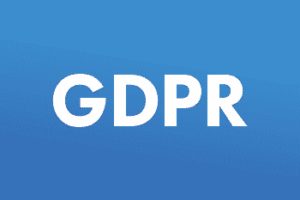Do businesses have $100,000+ to spend on a data scientist? Not everyone is Amazon with pockets deep enough to have all the resources they need. Not all businesses can afford a data scientist or have the money to purchase an IBM Watson license. But, whether you have 100 or 10,000 employees, you face the same challenges of customer acquisition, employee attrition, sales forecasting or capturing a bigger slice of the market share. Today, a data-driven future is a reality for every business since the barriers for entry have been lowered. Technology has become more democratic with a solution for every business, whatever their size.
Data Scientists – Who are this Rare Breed?
Data Scientist, for the third year running, is the best job in America according to the Glassdoor report for 2018. This quote from their chief economist, Dr. Andrew Chamberlain throws light on why Data Scientists are getting snapped up by the highest payers “Not only are tech companies scrambling to hire Data Scientists, but industries across the board, from health care to nonprofits to retail, are also searching for this talent.” In fact, America is short around 150,000 people with data science skills, if not Data Scientists.
Data shapes business strategy. Data Scientists are making this data available in forms that can be utilized to give predictions. They make sense of the “Big” in Big Data, charting unknown territory. They organize and analyze both structured data and the even greater volume of unstructured data that comes through human input like emails, voice recordings, video, social media, etc. And they need domain expertise as well. In short, they are whiz kids with programming knowledge, high quantitative analytic ability and product intuition.
However, the truth is that not every business needs Data Scientists to get the best value from their data or even to put in place Machine Learning and other AI processes. A Gartner report says that 40% of tasks done by Data Scientists will become automated by 2020. In fact, more and more businesses are turning to off-the-shelf Predictive Analytics tools that can give the same decision-making insights at a much lower cost and with less hassle.
The Emergence of Self-Service in Predictive Analytics
Over the last ten years, Cloud Technology has become the norm. A byproduct of this transition is the increasing number of businesses using Business Intelligence Tools. It is no longer necessary to have large on-premises databases, thus making packed algorithms used in SaaS (Software as a Service) more cost-effective and faster to deploy.
Self-service analytical software makes reports and querying available to all decision-makers in the organization, with IT responsible for allowing what can be seen by whom. Built-in connectors bring together disparate data from inside and outside the organization, giving drill-down insights like never before. Data visualization, part of most of these services, makes it easy to run these reports and brings the benefits within reach of employees with no prior statistical knowledge. Thus, the previously known bottlenecks have been mitigated by these tools. Many of these SaaS providers have a subscription model for their products which are completely cloud-based. A subscription model ensures that the service continually shows value and profitability, or else customers will turn elsewhere. No matter the model, these three key components must be offered by any self-service analytical tool
- It must combine process operations as well as data analytic techniques and use machine learning to gain insights from data already available. Machine learning is what reduces or does away with the need of a Data Scientist.
- The analytical approach must include discovery, diagnostic and predictive tools to complement historical data
- The plug-and-play model should not be fired up once in a while, when needed for insights, but should be embedded into the existing systems and should be easy to deploy. This makes it widely used within the organization.
Data may be the new oil, but to get this oil to fuel your systems, the equations must change. It is no longer efficient to spend 80% of analytical setup time on data prepping. Business Intelligence tools that combine security, data prep and analytics–in fast to get up and running self-service models–are the best way for businesses to venture into this new complex space.
Sertics is a SaaS platform that provides the benefits of a Data Scientist, without the large price tag. Through an interactive and understandable interface, Sertics users will experience new business insights and data visualizations. To schedule a product demo, contact a product consultant today.









